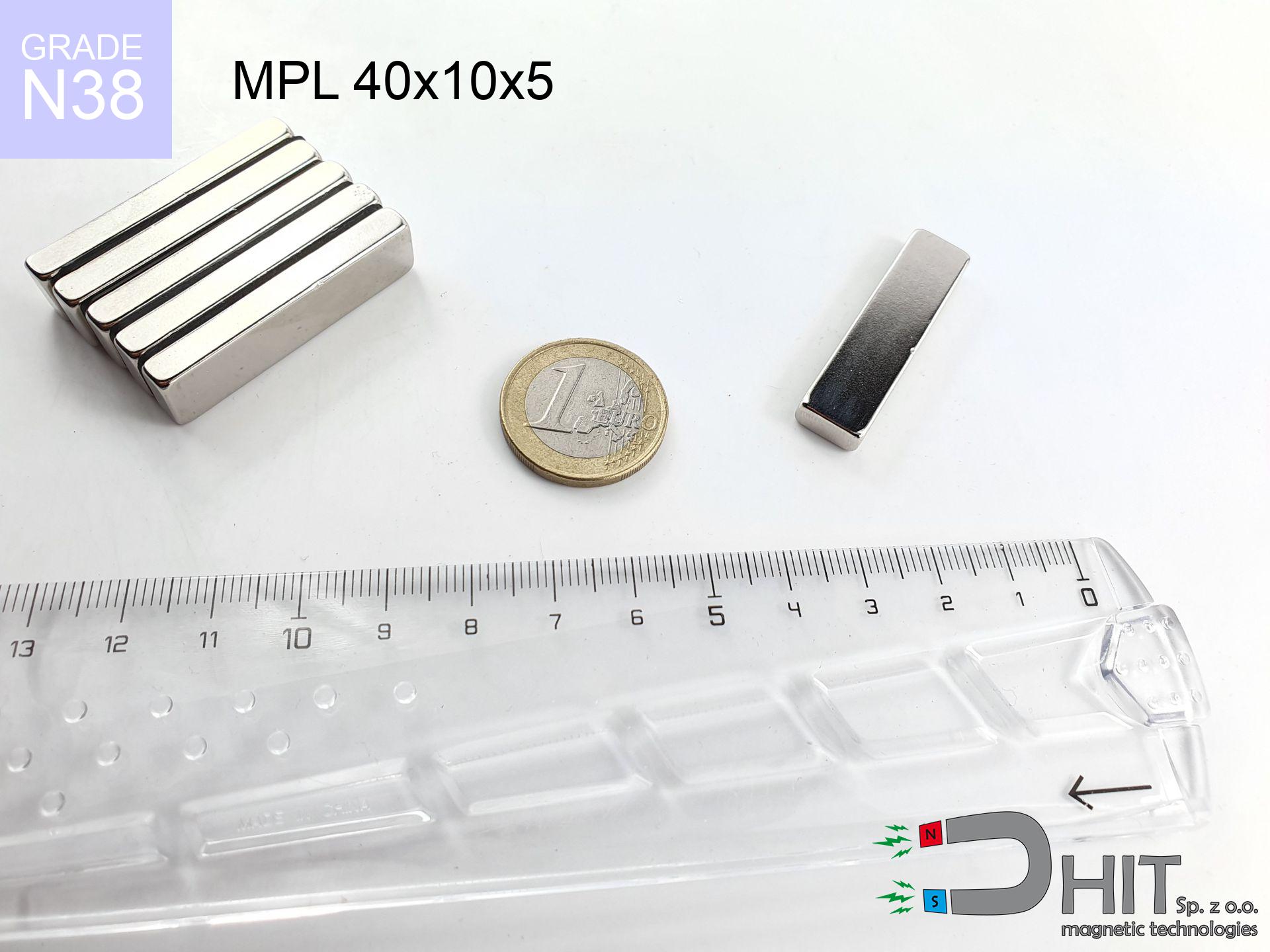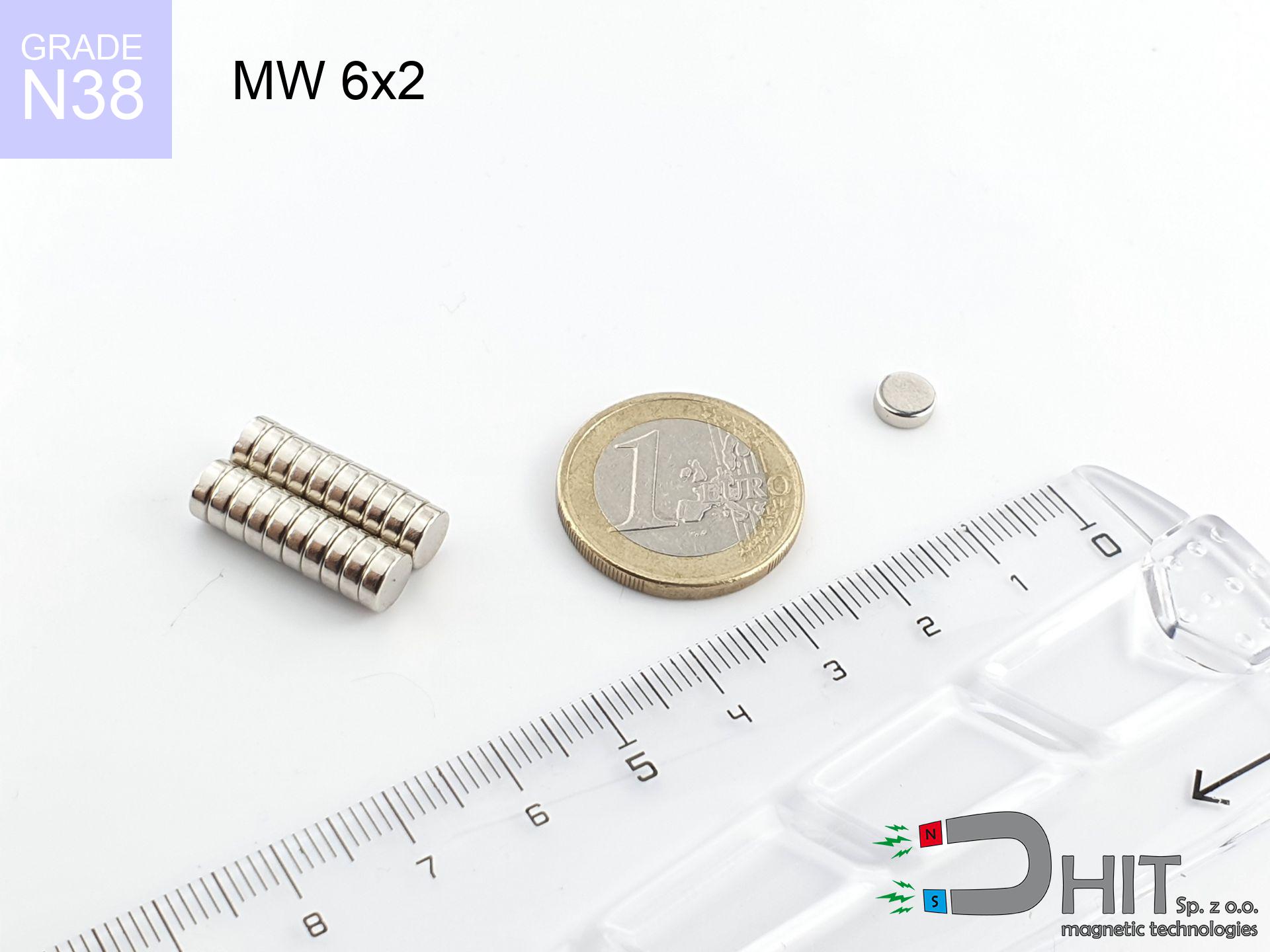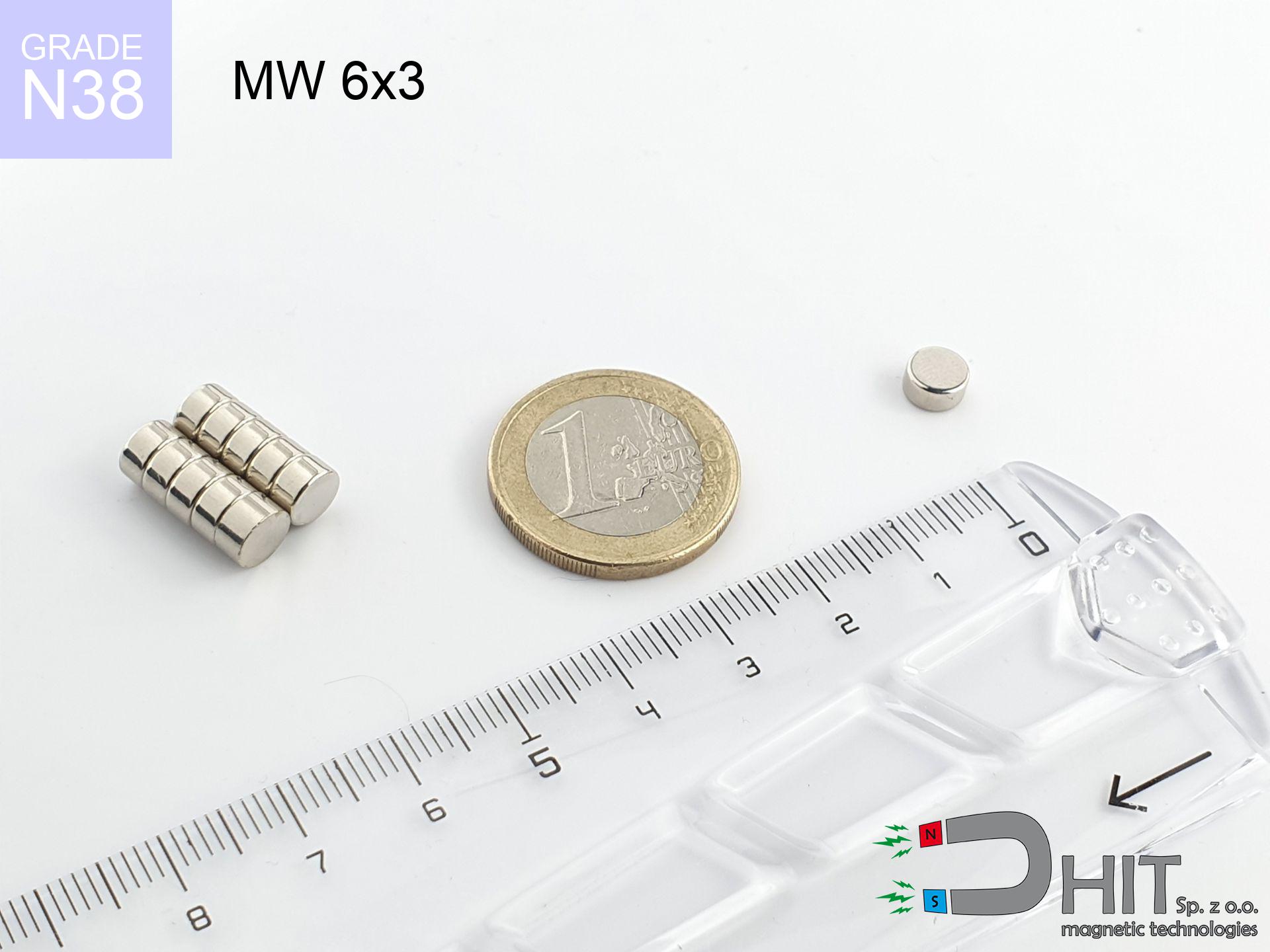SM 25x250 [2xM8] / N52 - magnetic separator
magnetic separator
Catalog no 130371
GTIN/EAN: 5906301813194
Diameter Ø
25 mm [±1 mm]
Height
250 mm [±1 mm]
Weight
960 g
Magnetic Flux
~ 9 500 Gauss [±5%]
762.60 ZŁ with VAT / pcs + price for transport
620.00 ZŁ net + 23% VAT / pcs
bulk discounts:
Need more?
Pick up the phone and ask
+48 22 499 98 98
otherwise send us a note using
contact form
the contact form page.
Weight along with shape of magnetic components can be analyzed using our
our magnetic calculator.
Orders submitted before 14:00 will be dispatched today!
Technical - SM 25x250 [2xM8] / N52 - magnetic separator
Specification / characteristics - SM 25x250 [2xM8] / N52 - magnetic separator
| properties | values |
|---|---|
| Cat. no. | 130371 |
| GTIN/EAN | 5906301813194 |
| Production/Distribution | Dhit sp. z o.o. |
| Country of origin | Poland / China / Germany |
| Customs code | 85059029 |
| Diameter Ø | 25 mm [±1 mm] |
| Height | 250 mm [±1 mm] |
| Weight | 960 g |
| Material Type | Stainless steel AISI 304 / A2 |
| Magnetic Flux | ~ 9 500 Gauss [±5%] |
| Size/Mount Quantity | 2xM8 |
| Polarity | circumferential - 9 poles |
| Casing Tube Thickness | 1 mm |
| Manufacturing Tolerance | ±1 mm |
Magnetic properties of material N52
| properties | values | units |
|---|---|---|
| remenance Br [min. - max.] ? | 14.2-14.7 | kGs |
| remenance Br [min. - max.] ? | 1420-1470 | mT |
| coercivity bHc ? | 10.8-12.5 | kOe |
| coercivity bHc ? | 860-995 | kA/m |
| actual internal force iHc | ≥ 12 | kOe |
| actual internal force iHc | ≥ 955 | kA/m |
| energy density [min. - max.] ? | 48-53 | BH max MGOe |
| energy density [min. - max.] ? | 380-422 | BH max KJ/m |
| max. temperature ? | ≤ 80 | °C |
Physical properties of sintered neodymium magnets Nd2Fe14B at 20°C
| properties | values | units |
|---|---|---|
| Vickers hardness | ≥550 | Hv |
| Density | ≥7.4 | g/cm3 |
| Curie Temperature TC | 312 - 380 | °C |
| Curie Temperature TF | 593 - 716 | °F |
| Specific resistance | 150 | μΩ⋅cm |
| Bending strength | 250 | MPa |
| Compressive strength | 1000~1100 | MPa |
| Thermal expansion parallel (∥) to orientation (M) | (3-4) x 10-6 | °C-1 |
| Thermal expansion perpendicular (⊥) to orientation (M) | -(1-3) x 10-6 | °C-1 |
| Young's modulus | 1.7 x 104 | kg/mm² |
Table 1: Rod construction
SM 25x250 [2xM8] / N52
| Parameter | Value | Description / Unit |
|---|---|---|
| Diameter (Ø) | 25 | mm |
| Total length | 250 | mm (L) |
| Active length | 214 | mm |
| Section count | 9 | modules |
| Dead zone | 36 | mm (2x 18mm starter) |
| Weight (est.) | ~933 | g |
| Active area | 168 | cm² (Area) |
| Housing material | AISI 304 | 1.4301 (Inox) |
| Surface finish | Ra < 0.8 µm | Polished |
| Temp. class | 80°C | Standard (N) |
| Force loss (at max °C) | -12.8% | Reversible loss (physics) |
| Force (calculated) | 22.6 | kg (theor.) |
| Induction (surface) | ~9 500 | Gauss (Max) |
Chart 2: Field profile (9 sections)
Chart 3: Temperature performance
Elemental analysis
| iron (Fe) | 64% – 68% |
| neodymium (Nd) | 29% – 32% |
| boron (B) | 1.1% – 1.2% |
| dysprosium (Dy) | 0.5% – 2.0% |
| coating (Ni-Cu-Ni) | < 0.05% |
Ecology and recycling (GPSR)
| recyclability (EoL) | 100% |
| recycled raw materials | ~10% (pre-cons) |
| carbon footprint | low / zredukowany |
| waste code (EWC) | 16 02 16 |
Other products
Pros as well as cons of rare earth magnets.
Strengths
- They do not lose strength, even during around ten years – the drop in lifting capacity is only ~1% (based on measurements),
- They do not lose their magnetic properties even under close interference source,
- The use of an aesthetic coating of noble metals (nickel, gold, silver) causes the element to present itself better,
- Magnets are distinguished by extremely high magnetic induction on the surface,
- Thanks to resistance to high temperature, they are capable of working (depending on the shape) even at temperatures up to 230°C and higher...
- Thanks to modularity in constructing and the ability to modify to client solutions,
- Wide application in innovative solutions – they find application in computer drives, brushless drives, precision medical tools, also industrial machines.
- Relatively small size with high pulling force – neodymium magnets offer high power in small dimensions, which allows their use in compact constructions
Limitations
- They are fragile upon too strong impacts. To avoid cracks, it is worth protecting magnets in a protective case. Such protection not only shields the magnet but also increases its resistance to damage
- When exposed to high temperature, neodymium magnets suffer a drop in power. Often, when the temperature exceeds 80°C, their power decreases (depending on the size and shape of the magnet). For those who need magnets for extreme conditions, we offer [AH] versions withstanding up to 230°C
- Magnets exposed to a humid environment can corrode. Therefore when using outdoors, we recommend using waterproof magnets made of rubber, plastic or other material protecting against moisture
- Limited possibility of producing threads in the magnet and complex forms - recommended is casing - magnet mounting.
- Health risk related to microscopic parts of magnets pose a threat, if swallowed, which is particularly important in the context of child safety. Additionally, small components of these magnets are able to disrupt the diagnostic process medical when they are in the body.
- Due to expensive raw materials, their price is relatively high,
Holding force characteristics
Maximum lifting force for a neodymium magnet – what contributes to it?
- on a base made of mild steel, effectively closing the magnetic field
- whose transverse dimension reaches at least 10 mm
- with a surface free of scratches
- without any insulating layer between the magnet and steel
- during detachment in a direction perpendicular to the mounting surface
- at temperature approx. 20 degrees Celsius
Lifting capacity in real conditions – factors
- Distance – existence of foreign body (paint, dirt, air) acts as an insulator, which reduces power steeply (even by 50% at 0.5 mm).
- Direction of force – highest force is obtained only during perpendicular pulling. The resistance to sliding of the magnet along the surface is usually many times smaller (approx. 1/5 of the lifting capacity).
- Substrate thickness – for full efficiency, the steel must be adequately massive. Thin sheet restricts the lifting capacity (the magnet "punches through" it).
- Metal type – not every steel reacts the same. High carbon content weaken the interaction with the magnet.
- Surface quality – the more even the plate, the better the adhesion and higher the lifting capacity. Roughness creates an air distance.
- Thermal factor – high temperature reduces pulling force. Exceeding the limit temperature can permanently damage the magnet.
Lifting capacity was determined with the use of a smooth steel plate of optimal thickness (min. 20 mm), under perpendicular pulling force, however under attempts to slide the magnet the lifting capacity is smaller. Additionally, even a minimal clearance between the magnet and the plate lowers the lifting capacity.
Precautions when working with neodymium magnets
Pinching danger
Risk of injury: The attraction force is so great that it can cause hematomas, crushing, and broken bones. Protective gloves are recommended.
Combustion hazard
Powder generated during grinding of magnets is combustible. Avoid drilling into magnets without proper cooling and knowledge.
Respect the power
Use magnets consciously. Their powerful strength can surprise even experienced users. Stay alert and respect their force.
Data carriers
Equipment safety: Strong magnets can damage data carriers and delicate electronics (pacemakers, hearing aids, mechanical watches).
ICD Warning
Warning for patients: Powerful magnets affect electronics. Maintain minimum 30 cm distance or ask another person to work with the magnets.
Avoid contact if allergic
Nickel alert: The Ni-Cu-Ni coating consists of nickel. If skin irritation appears, cease handling magnets and use protective gear.
Protective goggles
NdFeB magnets are ceramic materials, meaning they are prone to chipping. Clashing of two magnets will cause them breaking into small pieces.
No play value
Strictly store magnets away from children. Choking hazard is high, and the consequences of magnets connecting inside the body are very dangerous.
Demagnetization risk
Monitor thermal conditions. Heating the magnet to high heat will permanently weaken its properties and strength.
GPS and phone interference
A powerful magnetic field negatively affects the operation of compasses in smartphones and navigation systems. Do not bring magnets close to a device to prevent damaging the sensors.

![Magnetic bar SM 25x250 [2xM8] / N52 Magnetic bar SM 25x250 [2xM8] / N52](https://cdn3.dhit.pl/graphics/banners/magnet.webp)
![SM 25x250 [2xM8] / N52 - magnetic separator](https://cdn3.dhit.pl/graphics/products/sm-25x250-2xm8-sam.jpg)





